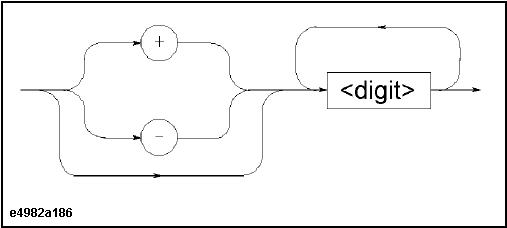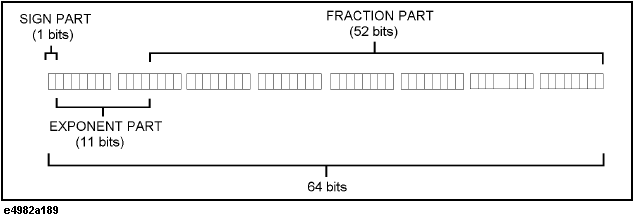
Other topics about Retrieving Measurement Results
When you transfer data with the following commands, you can select either the ASCII format or binary format.
Commands that begin with :DATA
To set the data transfer format, use the following commands:
When you select the ASCII format as the data transfer format, numbers are transferred as ASCII bytes, each of which corresponds to one of the formats shown below. Note that numbers are separated by a comma (,) in accordance with the IEEE 488.2 specification.
Numbers are expressed as integers in this format. For example, 201 is expressed as “+201” or “201.”

Numbers are expressed with floating points in this format. For example, 1000 is expressed as “1.0E+3” or “+1.0E+3.”

When you select the binary format as the data transfer format, numerical data (binary data) are transferred in the format shown in the figure below.
Binary Format

In this format, the data is represented with a hash (#) mark, the number 6 (indicating that <Number of bytes> is 6 bytes), the number of the binary data to be transferred (<Number of bytes>), the binary data itself, and finally the message terminator <new line>^END. Binary data is in IEEE 754 floating point format of 64-bit configuration as shown in the figure below.
64-bit Floating Point Data

In the binary format, you can select either of the following transfer orders for each byte comprising an 8-byte data string:
NORMal - Data transfer begins from the byte containing MSB (Most Significant Bit, the leftmost byte shown in the 64-bit Floating Point Data figure).
SWAPped - Data transfer begins from the byte containing LSB (Least Significant Bit, the rightmost byte shown in the 64-bit Floating Point Data figure).
To set the byte order, use the following command:
See these sample programs: